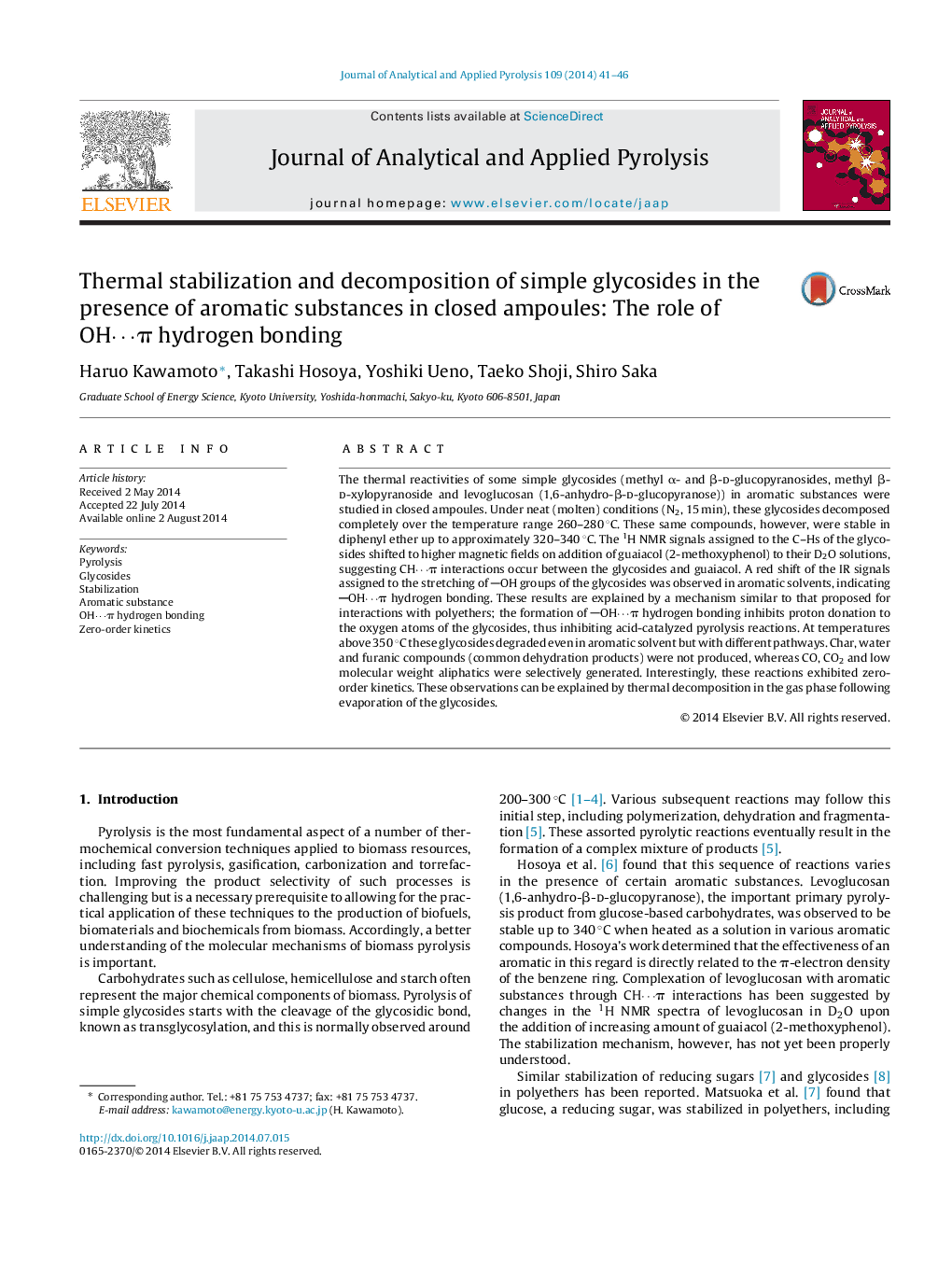| Article ID | Journal | Published Year | Pages | File Type |
|---|---|---|---|---|
| 7606871 | Journal of Analytical and Applied Pyrolysis | 2014 | 6 Pages |
Abstract
The thermal reactivities of some simple glycosides (methyl α- and β-d-glucopyranosides, methyl β-d-xylopyranoside and levoglucosan (1,6-anhydro-β-d-glucopyranose)) in aromatic substances were studied in closed ampoules. Under neat (molten) conditions (N2, 15 min), these glycosides decomposed completely over the temperature range 260-280 °C. These same compounds, however, were stable in diphenyl ether up to approximately 320-340 °C. The 1H NMR signals assigned to the C-Hs of the glycosides shifted to higher magnetic fields on addition of guaiacol (2-methoxyphenol) to their D2O solutions, suggesting CHâ¯Ï interactions occur between the glycosides and guaiacol. A red shift of the IR signals assigned to the stretching of OH groups of the glycosides was observed in aromatic solvents, indicating OHâ¯Ï hydrogen bonding. These results are explained by a mechanism similar to that proposed for interactions with polyethers; the formation of OHâ¯Ï hydrogen bonding inhibits proton donation to the oxygen atoms of the glycosides, thus inhibiting acid-catalyzed pyrolysis reactions. At temperatures above 350 °C these glycosides degraded even in aromatic solvent but with different pathways. Char, water and furanic compounds (common dehydration products) were not produced, whereas CO, CO2 and low molecular weight aliphatics were selectively generated. Interestingly, these reactions exhibited zero-order kinetics. These observations can be explained by thermal decomposition in the gas phase following evaporation of the glycosides.
Related Topics
Physical Sciences and Engineering
Chemistry
Analytical Chemistry
Authors
Haruo Kawamoto, Takashi Hosoya, Yoshiki Ueno, Taeko Shoji, Shiro Saka,
